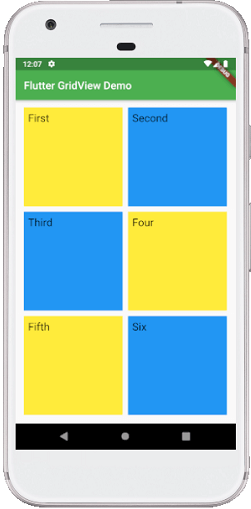
- TABVIEW IN REACT NATIVE HOW TO
- TABVIEW IN REACT NATIVE INSTALL
- TABVIEW IN REACT NATIVE ARCHIVE
- TABVIEW IN REACT NATIVE FOR ANDROID
This does not seem to be the case anymore, as content is shrinked to the height of the navigator. When using v2, the TabNavigator would expand to its content size, thus making it visible without having to implement a scrollview in the screens of the navigator. What you want to do instead is to register a component/screen which contains react-native-tab-view and have components/screens you wish to use as tabs as normal react component (do not register these with RNN).
TABVIEW IN REACT NATIVE HOW TO
Yet, in order to be able to scroll back up, I wrap all the page content (including the navigator) in a ScrollView. Learn more about how to use react-native-tab-view, based on react-native-tab-view code examples created from the most popular ways it is used in public. I want the user to be able to scroll down the page to see the content in the top bar navigator. I'm wrapping a Top Bar navigator in a scrollview to show additional content below some content. | ~npm or~ yarn | 1.22.18 bug repro provided platform:android platform:ios It should look like this all the Platform Also, there is no padding or margin set in the tab and I've tried removing the stylings on the tab view and this issue happens across the whole app on all of the tab views. Couldn't recreate in Snack but I linked one anyway. This issue only appeared after updating my react and react-native packages. However after I click to a different tab and click back to the first tab, the bar disappears: So when I first enter a screen that has a tab view, there is a weird white bar at the bottom of the tab screen. Once this process is complete, the user can start to build and run the application on the device.Import * as React from 'react' import, bug repro provided platform:android platform:ios In case of Expo not being used, yarn add react-native-pager-view
TABVIEW IN REACT NATIVE INSTALL
If Expo is being used, then it is advisable to get the compatible versions of libraries and run: expo install react-native-pager-view
TABVIEW IN REACT NATIVE ARCHIVE
The next step would be to install react-native-pager-view satya164 / react-native-tab-view Public archive Notifications Fork 1.1k Star 5. Now we need to install react-native-pager-view if you plan to support iOS and Android. Upon opening a terminal in the project root, run: yarn add react-native-tab-view Open a Terminal in the project root and run: yarn add react-native-tab-view. There can be multiple options for Tabview display like coverflow swipe, or text-only top bars as shown in the above image. The Tabview component follows the Material Design spec by default and utilizes a stateful API. Smooth swipeable content is a popular feature in several applications. It is fully customizable and can be typed fully with TypeScript. Tabview offers smooth animations and gestures in the application and supports both top and bottom tab bars. The issue I’ve documented is a great example something like testing a component with subcomponents using Vue test-utils in Jest required a rather large amount of digging. It also has compatibility with so many other existing development tools in existence today. The single file format is clean and easy to read, and state changes are managed easily using their v-prefix directives.
TABVIEW IN REACT NATIVE FOR ANDROID
This cross-platform component can be implemented by using react-native-pager-view for Android and iOS, and by using PanResponder for the web. That being said, because it’s less popular than React or Angular, often documentation on compatibility is limited, especially because support for Vue is often newer. Test a Vue Component with Nested Components As a reactive framework, Vue.js has a lot of really incredible benefits and uses.

The application users can scroll the tabs, move them vertically and horizontally for a smoother user interface. Tabview in React Native provides tabbed navigation for content in the application.

For this article, we shall take a look at the Tabview feature of React Native, and how it can be used. React Native offers a pretty decent range of tools for creating visually alluring applications. It can be implemented with JavaScript, Java, C++, Python, and Objective C. React native is one of the most prominent app development open-source platforms for mobile and web for Android and iOS. Tabview in React Native provides tabbed navigation for content in the application.


 0 kommentar(er)
0 kommentar(er)
